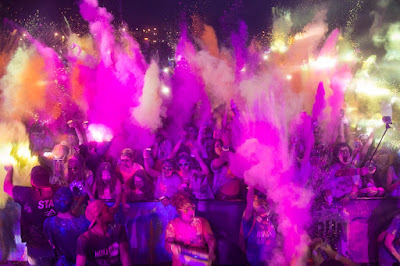Holi, the festival of colors, marks the beginning of spring and brings with it the colors of joy that represent the various shades of the spring season. But sadly, this beautiful festival is no more beautiful and has become a source of environmental degradation. It has been ruthlessly commercialized by chemical color manufacturing companies that produce harmful colors due to which the environment gets badly affected. Many social and environment-friendly groups have come up frequently to make people aware of the harmful effects of Holi colors. These groups encourage people to use organic colors and urge them to go back to traditional ways to enjoy the true essence of the festival. This article aims at making people realize the negative effects of Holi gulal on our health and environment.
Typically, there are three different types of Holi colors available in the market. These include Holi Paste Colours, Holi Dry Colours, and Holi Wet Colours, Holi Gulal. Let's take a look at the composition of these 3 different types of colors.
 |
| Holi Gulal |
Harmful Chemicals in Holi Paste Colors
- Color - Chemical Content - Effects on Health
- Green - Copper Sulphate - Eye allergy and temporary blindness
- Black - Lead Oxide - Renal failure and learning disability
- Purple - Chromium Iodide - Bronchial asthma and other respiratory diseases
- Silver - Aluminium Bromide - Carcinogenic
- Red - Mercury Sulphide - Skin cancer
Harmful Chemicals in Holi Gulal
Holi gulal powder also called dry Holi colors are made out of a colorant and a base. The colorants used in making Holi gulal are toxic and the base is mostly asbestos or silica. Both components cause health-related problems. Colorants contain heavy metals, which can cause respiratory problems, dermatitis, eye allergy, and so on.
 |
| Holi gulal powder |
Harmful Chemicals in Wet Holi Colours
Wet Holi colors are mostly made out of Gentian violet that causes skin discoloration and many other skin related diseases. Holi color sellers especially roadside sellers often sell colors that are meant only for industrial use. The degree of health issues these colors cause cannot be fathomed.
How These Colors Affect the Environment
These toxic Holi colors not only pose a threat to your health but affect our environment too. Frequent use of these colors can disturb the ecological balance. Holi colors are very difficult to decompose biologically as they are complex structured polymers. On washing away, these toxic colors enter rivers and soil and do not decompose easily causing environmental degradation.
The Safest Alternative
Taking into consideration the health and environmental hazards of chemical-based Holi colors, people must shift to organic Holi colors. These herbal colors can be easily made at home with natural ingredients. One can enjoy the Holi festival with organic colors without worrying about anything. Herbal gulal is not only a great alternative to chemical Holi colors but these colors also produce a healthy shining effect on the skin. Let's take a look at how easily you can make these Holi colors at home.
Color - Method of Preparation
- Red - Mix red sandalwood powder with sindoor or soak red hibiscus flowers overnight to get a wet red color
- Saffron - Crush dried tesu flowers to a powder, and then mix it with sandalwood powder.
- Yellow - Mix turmeric (Haldi) and gram flour (besan) to make yellow color
- Black - Boil gooseberries (fruits of amla) in an iron container for a few minutes and leave it for some time and later dilute it for further use.
- Green - Mix henna powder (Mehendi) with any suitable flour to get a lovely green shade.
So now that you have many different ways to extract natural and organic Holi colors and organic Gulal powder just go ahead and play safe Holi this season. You can also get these colors readily made for you at different online organic color stores. Just find the best suitable for you.
No comments:
Post a Comment